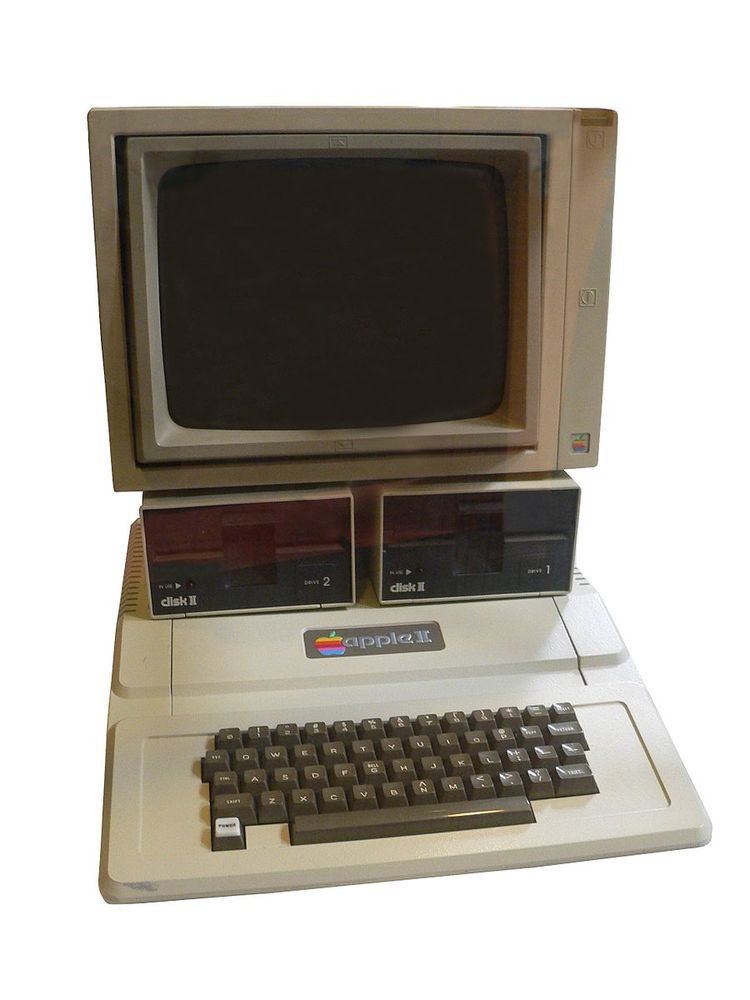 | ||
Retrocomputing is the use of older computer hardware and software in modern times. Retrocomputing is usually classed as a hobby and recreation rather than a practical application of technology; enthusiasts often collect rare and valuable hardware and software for sentimental reasons. However, some do make use of it. Retrocomputing often starts when a computer user realizes that formerly expensive fantasy systems like IBM mainframes, Digital Equipment Corporation (DEC) superminis, or Silicon Graphics (SGI) workstations have become affordable on the used computer market, usually in a relatively short time after the computers' era of use.
Contents
- Historical retrocomputing
- Homebrew computers
- Vintage computers
- MITS Inc
- IMSAI
- Processor Technology
- SWTPC
- Apple Inc
- IBM
- Acorn BBC Archimedes
- TandyRadio Shack
- Sinclair
- MSX
- Robotron
- Internet
- In popular culture
- Reception
- References
Many hobbyists have personal computer museums, with collections of working vintage computers such as Apple IIs, IBM PCs, ZX Spectrums, Atari, Commodore, Amigas and BBC Micros. Early personal computers based on the S-100 bus are also very popular among collectors, as well as a wide variety of machines running the CP/M operating system, such as Kaypros and Osbornes. However, many users use emulation software on more modern computers rather than using real hardware, in order to enjoy the experience, while preserving the aging electronics of the original. This is not considered to be retrocomputing by some, as it is rather an application of modern computer hardware. A third option is the use of home computer remakes, dedicated appliances, which do the emulation using dedicated hardware.
Historical retrocomputing
A more serious line of retrocomputing is part of the history of computer hardware. It can be seen as the analogue of experimental archaeology in computing. Some notable examples include the reconstruction of Babbage's Difference engine (more than a century after its design) and the implementation of Plankalkül in 2000 (more than half a century since its inception).
"Homebrew" computers
Some retrocomputing enthusiasts also consider the 'Homebrewing' (designing and building of retro- and retro-styled computers or kits), to be an important aspect of the hobby, giving new enthusiasts an opportunity to experience more fully what the early years of hobby computing were like. There are several different approaches to this end. Some are exact replicas of older systems, and some are newer designs based on the principles of retrocomputing, while others combine the two, with old and new features in the same package. Examples include:
Vintage computers
The personal computer has been around since approximately 1976. But in that time, numerous technological revolutions have left generations of obsolete computing equipment on the junk heap. Nevertheless, in that time, these otherwise useless computers have spawned a sub-culture of vintage computer collectors, who often spend large sums to acquire the rarest of these items, not only to display but restore to their fully functioning glory, including active software development and adaptation to modern uses. This often includes so-called hackers who add-on, update and create hybrid composites from new and old computers for uses for which they were otherwise never intended. Ethernet interfaces have been designed for many vintage 8-bit machines to allow limited connectivity to the Internet; where users can access user groups, bulletin boards and databases of software. Most of this hobby centers on those computers manufactured after 1960, though some collectors specialize in pre-1960 computers as well.
MITS Inc.
Micro Instrumentation and Telemetry Systems (MITS) produced the Altair 8800 in 1975, which is widely regarded as starting the microcomputer revolution.
IMSAI
IMSAI produced a machine similar to the Altair 8800, though considered by many to be a more robust design.
Processor Technology
Processor Technology produced the Sol-20. This was one of the first machines to have a case that included a keyboard; a design feature copied by many of later "home computers".
SWTPC
Southwest Technical Products Corporation (SWTPC) produced the SWTPC 6800 and later the SWTPC 6809 kits that employed the Motorola 68xx series microprocessors. The 68xx line was to be followed later by the 6502 processor that was used in many early "home computers", such as the Apple II.
Apple Inc.
The earliest of the Apple Inc. personal computers are among some of the most collectible. They are relatively easy to maintain in an operational state thanks to Apple's use of readily available off-the-shelf parts.
IBM
Acorn BBC & Archimedes
Tandy/Radio Shack
Sinclair
MSX
Robotron
Internet
There are a number of sites on the Internet catering to vintage computer hobbyists, including web pages, mailing lists, newsgroups, discussion forums, etc. Some are dedicated to certain specific systems while others are more generic and cover many different systems. Erik Klein's Vintage Computer Forum is one example of a discussion page covering all aspects of the hobby.
cctech, also known as the "Classic Computers Discussion List", is an electronic mailing list about old computer technology, and is run by the Classic Computing organization.
In popular culture
In an interview with Conan O'Brien, George R. R. Martin revealed that he writes his books using WordStar 4.0, an application dating back to 1987.
Reception
Retrocomputing (and retrogaming as aspect) has been described in one paper as preservation activity and as aspect of the remix culture.
